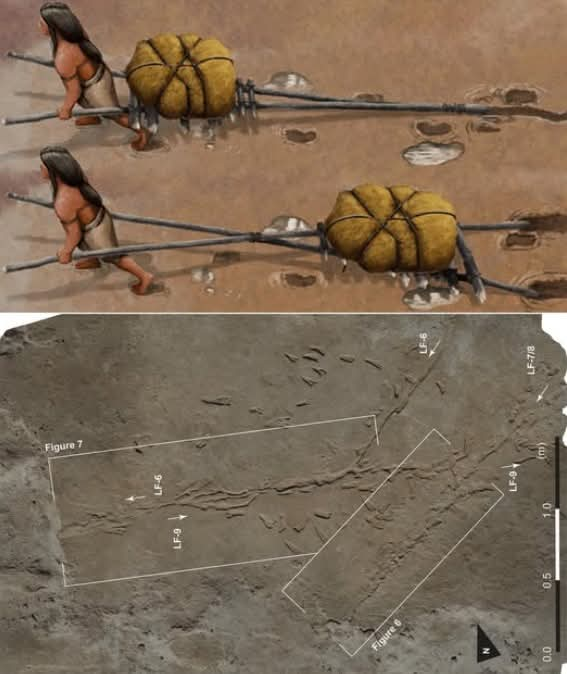A fascinating new study has revealed that a set of ancient footprints and drag marks discovered in White Sands National Park, New Mexico, may provide important clues about how early people in North America transported goods and supplies. These remarkable marks, preserved in the soft sediment of what was once a lakeshore, are estimated to be about 22,000 years old — making them some of the oldest known human traces in the Americas.Scientists believe that the patterns of the footprints and long drag lines in the ground suggest the use of a travois, a type of primitive transport tool. A travois is a simple wooden frame made by lashing two long poles together at one end to form a triangle, with a crosspiece or netting attached between them. The wide ends of the poles rest on the ground and can be dragged behind a person or an animal such as a dog.This tool was useful for carrying heavy or bulky items, such as firewood, harvested plants, food, tools, and possibly even young children who couldn’t walk long distances. The idea is similar to a sled, but instead of sliding on snow, it glides over dirt or sand. According to researchers, the shape and spacing of the drag marks closely match what would be expected if a travois were being pulled across the ground. In some places, small footprints appear next to the drag marks — possibly those of a child riding on the travois.This discovery provides valuable insight into the daily lives and resourcefulness of early humans. It shows that people living thousands of years ago were already developing creative ways to solve problems and make physical labor more efficient. The use of simple tools like the travois demonstrates early innovation in technology and hints at the social structure of these communities — such as cooperation, care for children, and the need to transport belongings as groups moved through the landscape.Overall, the footprints and drag marks at White Sands are more than just impressions in the earth — they are a powerful reminder of the intelligence, adaptability, and resilience of our ancient ancestors.
